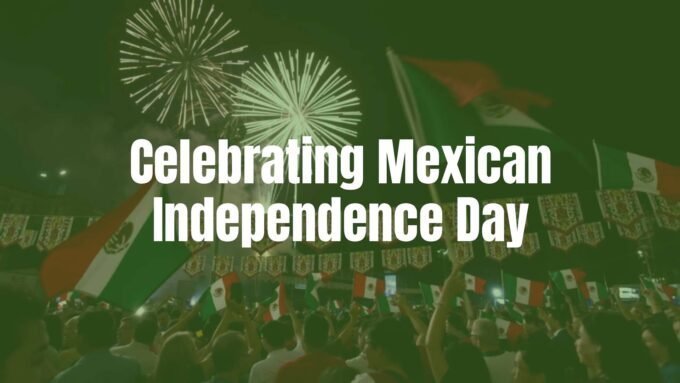Mexican Spanish and Castilian Spanish share the same language, but they are not identical. Think of them like American English and British English: the base is the same, but there are clear differences in sound, word choice, and some grammar. These changes rarely block understanding. Spanish has a long history and a huge reach, with about 500 million speakers across 21 countries. With that spread come local styles and quirks, which is why comparing Mexican and Castilian Spanish is such an interesting look at language and culture.
Knowing these differences helps learners, travelers, and businesses. Whether you’re ordering coffee or adapting content for a local audience, recognizing small (and sometimes big) differences helps communication, builds respect for local culture, and avoids mistakes. Let’s explore what sets these two well-known varieties apart.
Mexican Spanish vs Castilian Spanish: What Are the Key Differences?
Is Mexican Spanish and Castilian Spanish the Same Language?
Yes. Both are Spanish. But saying they are “the same” is like saying American and British English are the same. Speakers understand each other easily because the core grammar, sentence structure, and most vocabulary match. The differences show up in accent, preferred words, and a few patterns that changed over time in each place.
“Castilian” can mean different things. In English, it often points to the Spanish spoken in northern Spain. In Spain, “castellano” can mean the Spanish language in contrast to Catalan, Galician, or Basque. In parts of South America, “castellano” is used instead of “español” for historical reasons. Either way, Mexican and Castilian Spanish are lively parts of the same global language, each with its own story and style.
What Are the Historical Roots of Mexican and Castilian Spanish?
Spanish grew out of Vulgar Latin, spoken by everyday people in the Roman Empire. Over time, regional forms of Latin in the Iberian Peninsula became the Romance languages, including Spanish. Several local varieties existed, but the version spoken in Castile rose to become the standard, often called Castilian Spanish.
In 1492, Columbus reached the Caribbean, and Antonio de Nebrija published the first grammar of Castilian, Gramática de la lengua castellana. He dedicated it to Queen Isabel and wrote that language goes with empire, a line that proved true in the Americas as Spain spread its language in the 16th century.
When Spain colonized Mexico, it met many indigenous peoples and languages. At first, local languages were used for communication. Spanish later took a leading role because the colonial government required it for official records and the Catholic Church used it in schools and missions. Mixed families and steady migration from Spain and other Spanish-speaking areas pushed Spanish forward. Over time, contact with indigenous languages-especially Nahuatl-shaped what we now call Mexican Spanish.

Where Are Mexican and Castilian Spanish Spoken?
Mexican Spanish is spoken mainly in Mexico, the largest Spanish-speaking country, with over 125 million speakers. Its influence also reaches parts of Latin America and the United States through migration and media.
Castilian Spanish is the official language of Spain. It is often the version taught in many schools worldwide and is common in central and northern Spain. Spain also has co-official regional languages-Basque, Catalan, Galician, and Occitan-used in their regions and protected by law.
Both Mexico and Spain have many local accents and varieties. Still, “Mexican vs Castilian” usually refers to the most widely heard forms in each place.
Pronunciation Variations: How Do Mexican Spanish and Castilian Spanish Sound Different?
The first difference most people notice is pronunciation. Like British and American English, Spanish from Spain and Spanish from Mexico have distinct sounds. These patterns give each variety its own “music.”
Most words sound alike, but a few letters and combinations stand out. These markers make it easy for native speakers to guess where someone is from and can shape which accent a learner finds easier.
Distinctive Pronunciation of ‘z’ and ‘c’ in Castilian Spanish
The best-known difference is how Spain pronounces ‘z’ and ‘c’ before ‘e’ or ‘i’. In most of Spain, these letters sound like the English “th” in “think.” This is called “ceceo” or “distinción.”
Examples:
– cielo (sky): “th-ielo” in Spain, “s-ielo” in Mexico
– zapato (shoe): “th-apato” in Spain, “s-apato” in Mexico
– cereza (cherry): “th-ere-th-a” in Spain, “se-RE-sa” in Mexico
– cerveza (beer): “ther-be-tha” in Spain, “ser-VE-sa” in Mexico
Mexico uses “seseo,” where both ‘z’ and ‘c’ (before ‘e’/‘i’) sound like ‘s’. Many English speakers find this consistent ‘s’ sound easier at first.
Differences in Syllable Stress and Intonation
Beyond letters, the rhythm and tone differ. Many learners feel Mexican Spanish has a smoother, steady flow with softer ‘s’ sounds. Castilian Spanish, especially in the center and north of Spain, can sound more forceful and sometimes faster. Neither is better; they just sound different, much like London vs New York speech patterns.
Vocabulary and Slang: Words Unique to Each Variety
Grammar is the framework of a language, but words and slang give it life. This is where differences are easy to spot and can cause funny mix-ups, like US and UK English slang.
Speakers share most vocabulary, but a noticeable slice differs, especially for daily items, food, and casual speech.
Common Everyday Words That Differ in Spain and Mexico
Daily life brings different terms for the same thing. Here are some common differences:
| Meaning | Spain | Mexico |
|---|---|---|
| car | coche | carro |
| apartment | piso | departamento |
| potato | patata | papa |
| mobile phone | móvil | celular |
| juice | zumo | jugo |
| pen | bolígrafo | pluma |
| peach | melocotón | durazno |
| grapefruit | pomelo | toronja |

Tip: in Spain “el Papa” means the Pope, so “papa” and “el Papa” are very different.
Influence of Indigenous Languages on Mexican Spanish
Indigenous languages, especially Nahuatl, left a big mark on Mexican Spanish. This shows Mexico’s deep pre-Hispanic roots and centuries of mixing cultures.
Many common words come from Nahuatl: “chocolate” (xocolatl), “aguacate” (avocado), “chile” (chili pepper), and “tomate” (tomato). In Spain, vocabulary was shaped more by European and Arabic contact, while Mexico kept many indigenous terms.
Popular Slang Terms in Mexican and Castilian Spanish
Slang reflects daily life and humor. To say something is “cool,” Mexicans might say “¡Qué padre!” or “¡Qué chido!”, while in Spain people say “¡Qué guay!”
Words for “dude” vary a lot: Mexico uses “wey/güey,” Spain uses “tío” (literally “uncle”). If you’re hungover, Mexico says “estar crudo,” Spain says “tener resaca.”
Watch out for “coger”: in Spain it means “to take” (e.g., “coger el autobús”), but in Mexico it is a vulgar term. Use “tomar” in Mexico to avoid problems.
Grammar and Usage: Notable Differences in Structure
The basic rules are the same, but habits differ. Over time, each region developed its own preferences. These choices help you sound natural in each place.
Key areas include how you address groups, how often you use certain tenses, and small shifts in pronoun use.
Use of Vosotros vs Ustedes
Spain distinguishes between informal and formal “you” in the plural: “vosotros” (informal) vs “ustedes” (formal). Verbs change to match: “vosotros habláis” vs “ustedes hablan.”
Mexico does not use “vosotros.” “Ustedes” is used for any group, formal or informal: “ustedes hablan.” For learners focused on Mexico, that’s one less conjugation to learn.
Variation in Verb Conjugations and Tenses
The main patterns are shared, but preferences differ. Spain often keeps more irregular forms where Mexico may prefer more regular ones (a general trend, not a strict rule).
Mexican Spanish uses diminutives more often and with extra warmth: “besito,” “casita,” “abuelita.” These forms can show affection, not just small size, a use that likely connects to indigenous language patterns. In Spain, diminutives exist but may carry less emotional weight in daily speech.
Direct Object Pronoun Use
In Mexico, direct object pronouns follow standard rules:
– Mara habló con Juan. Lo vio ayer. (She saw him yesterday.)
– A Inés y a Betty las conocí en clase de francés. (I met them in French class.)
In Spain, many speakers use “le” for direct objects referring to a male person-this is called “leísmo.” So you might hear “Le vio ayer” instead of “Lo vio ayer.” The Royal Spanish Academy accepts “le” for male persons in this case, though not for other cases. This feature is mostly found in Spain.
Preference for Present Perfect in Spain vs Preterite in Mexico
For recent past actions, Spain tends to use the present perfect: “he comido” (I have eaten), “hemos visto” (we have seen). Mexico usually uses the preterite: “comí” (I ate), “vimos” (we saw). Both are understood everywhere, but the habit differs.
Forms of Address and Politeness: Addressing People in Each Variant
Choosing the right form of “you” reflects politeness and social norms. Both Mexico and Spain use formal and informal address, but patterns are not the same.
Understanding these choices helps you sound respectful and natural in different settings.
When to Use Tú, Usted, Vosotros, and Ustedes
Both regions use “tú” (informal singular) and “usted” (formal singular). The big split shows up with the plural “you.”
| Context | Spain | Mexico |
|---|---|---|
| Informal plural “you” | vosotros | ustedes |
| Formal plural “you” | ustedes | ustedes |
Examples:
– Spain informal: ¿Vosotros queréis ir a la playa?
– Spain formal: ¿Ustedes quieren ir a la playa?
– Mexico (any group): ¿Ustedes quieren ir a la playa?
Levels of Formality in Social and Professional Settings
Both cultures value respect, especially with elders or in work settings. In Mexico, “Don” or “Doña” before a first name (Don José, Doña María) shows respect, usually for someone older. In Spain, “Señor/Señora” is common; “Don/Doña” is less frequent in daily talk.
How much slang appears in semi-formal situations can vary. Mexico may use some casual phrases even in polite contexts; Spain has its own formal set phrases that may sound less common in Mexico. Learning these habits helps you fit in better.
Why Does Regional Dialect Matter?
Many people ask: if everyone understands each other, why worry about dialects? While understanding is high, using the right style helps you connect with a local audience and avoid mistakes, especially in formal or written work.
Small mismatches can cause awkward moments or wrong impressions. Clear, region-aware language helps you be understood correctly and respectfully.
Implications for Translation and Localization
For businesses and content teams, choosing the right variant matters a lot. Localization means adapting a message to a specific region’s language and culture, not just translating word-for-word.
A Mexican audience may find Castilian slang odd, and a Spanish audience may find Mexican colloquialisms out of place. With legal, medical, or technical texts, accuracy is non-negotiable. Some words are normal in one place and offensive in another-“coger” is a good example.
When hiring translation services, say which variant you need (Mexican, Castilian, etc.). Professional teams use native SME translators for the target region. They pick words that are correct and that sound right locally. A careful approach helps brands connect, build trust, and communicate clearly. Generic translations or automated tools like Google Translate often miss these fine differences and can weaken your message.
Which Variant Should You Learn or Use?
If you are starting Spanish or need it for work or travel, you may wonder which variant to pick. Both are valid and widely used. Be practical and choose the one that fits your goals.
The best choice is the one that matches your plans and what you can access right now. You can always add the other style later.
Factors for Choosing Between Mexican and Castilian Spanish
Use these points to guide your choice:
- Your Travel or Residence Plans: If you plan to live, work, or travel in Mexico or parts of Latin America, learn Mexican Spanish. If Spain is your main focus, choose Castilian Spanish.
- Your Professional or Academic Goals: Pick the variant used by your clients, partners, or field of study. Matching your audience helps you communicate clearly.
- Availability of Resources: Go with what you can access: local community, classes, tutors, media, or textbooks. The more contact you have, the faster you’ll improve.
- Personal Preference and Sound: Listen to both. Pick the accent you enjoy. Liking how it sounds can keep you motivated.
- Starting From Zero: Some beginners find Mexican Spanish a bit easier at first because it avoids “vosotros” and uses an ‘s’ sound for ‘z’/‘c’ before ‘e’/‘i’.
Spanish speakers will understand you no matter which path you pick. As you grow, you can learn features from other regions too. Many people switch styles over time, especially if they live or work in a new place. The key is to start, keep going, and enjoy using the language.
Frequently Asked Questions about Mexican Spanish vs Castilian Spanish
Are Mexican and Spanish Words Always Interchangeable?
No. Most words match, but many everyday terms, food words, and slang differ. Examples: “coche” vs “carro” (car), “zumo” vs “jugo” (juice), “patata” vs “papa” (potato). Slang can be very different and sometimes risky to use in the wrong place (like “coger”). Context helps, but don’t assume every word works everywhere, especially in formal writing.
Can Spanish Speakers from Spain and Mexico Understand Each Other?
Yes, they can. The situation is like American vs British English. There may be brief confusion with slang or idioms, but most conversation flows smoothly. The shared grammar and large common vocabulary make communication easy.
Which Variant Is More Widely Understood Internationally?
Because of population and media reach, Mexican (or broader Latin American) Spanish is probably heard more across the Americas. Castilian Spanish is common in Europe and many classrooms around the world. Both are widely understood, but exposure depends on where you are.
Key Takeaways for Learners and Travelers
Mexican and Castilian Spanish are two strong versions of the same language, each with its own voice. Learning the differences is not just about avoiding mistakes; it also builds your cultural awareness.
Spanish is used by hundreds of millions and keeps changing across regions. That variety makes it exciting. Enjoy the differences-whether you’re eating a “torta” in Mexico or a “bocadillo” in Spain, you are part of a shared language with rich local flavors.
Don’t let variations slow you down. Let them spark your curiosity. Listen closely, practice often, and speak with confidence. Learning Spanish is ongoing, and picking up regional features over time makes your skills stronger. Choose a starting point, immerse yourself as much as you can, and enjoy using Spanish in real life.













Leave a comment